Contractor ditches Deere Rs for more frugal 30-series
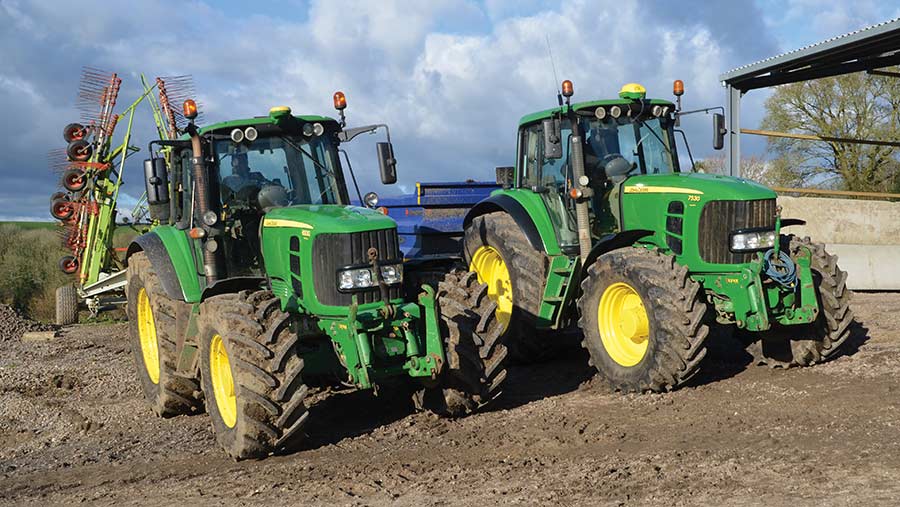 © Nick Fone
© Nick Fone It was about six years ago that various electronics- and emissions-related gremlins started to rear their ugly heads on Jack Dowding’s 2011 John Deere 6930.
Knowing that they were most likely to be sensor niggles rather than life-threatening heartstoppers, the Somerset contractor set out on a search for a solution to ensure the tractor’s ongoing reliability.
“Other than these engine-related electronic issues, the 6930 had been bomb-proof since I bought it on about 6,700 hours,” he explains.
“I wanted to run it on for a good while longer, but needed to make sure it would be reliable. I did a bit of research and found several people had recommended the services of the Derv Doctor.
See also: Tractor tuning perks and pitfalls: Is it worth the risk?
JW Dowding near Bruton, Somerset
- Farmed area 154ha
- Cropping Wheat: 36ha, barley: 25ha, grass leys: 50ha, with the remainder down to permanent pasture
- Contracting work Grass, wholecrop and maize silage; arable crop establishment and grass reseeds, combining and groundworks
- Machinery Tractors – 1995 John Deere 7700 (14,000 hours), 2011 6930 (14,000 hours), 2011 7530 (11,000 hours) and 2017 6195R (9,500 hours); loading shovel – 2010 JCB 416-S (6,000 hours); forager – 2010 Claas Jaguar 960 (4,000 engine hours); combine – 1999 New Holland TX66
- Staff Jack Dowding plus two others full-time and one or two others at peak times
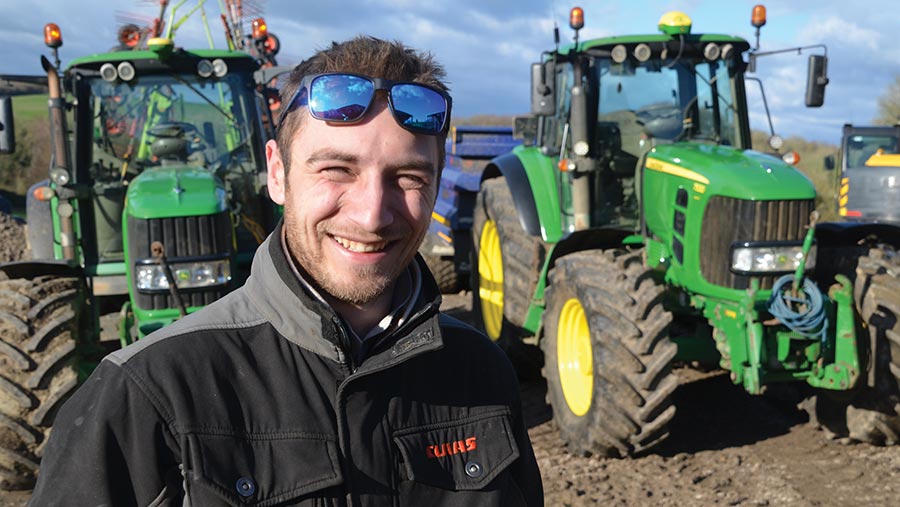
Jack Dowding © Nick Fone
“I rang them and they sent their local guy out to come and diagnose the faults.
“Pretty quickly he was back with his laptop and a software patch that not only did away with the emissions fault codes, but also provided a significant increase in power and torque.”
The unanticipated benefit of the “remap” uploaded to the engine ECU took a little while to become apparent.
“It was four or five months before I really began to appreciate the effect of the tuning job. It was only when I started to pull away from a 6250R on a hill with a loaded 14-tonner that I realised how much difference it had made.
“The other big thing I hadn’t realised was the import it would have on fuel use. On haulage it was drinking 15% less diesel than before and for fieldwork it was down by at least 20%.”
These pretty stark figures proved too good to ignore, so when Jack set out looking for another 30-series Deere to join the fleet, he was relieved to find a 2011 7530 that had already had the Derv Doctor treatment.
One added extra that the new arrival boasted was a blanked-off exhaust gas recirculation (EGR) valve.
It’s a modification that also requires a software patch and corresponding fuelling tweaks, and is predominantly undertaken to do away with EGR issues.
But it can also help in reducing running temperatures by just a couple of degrees – a big bonus when working a set of triple mower-conditioners.
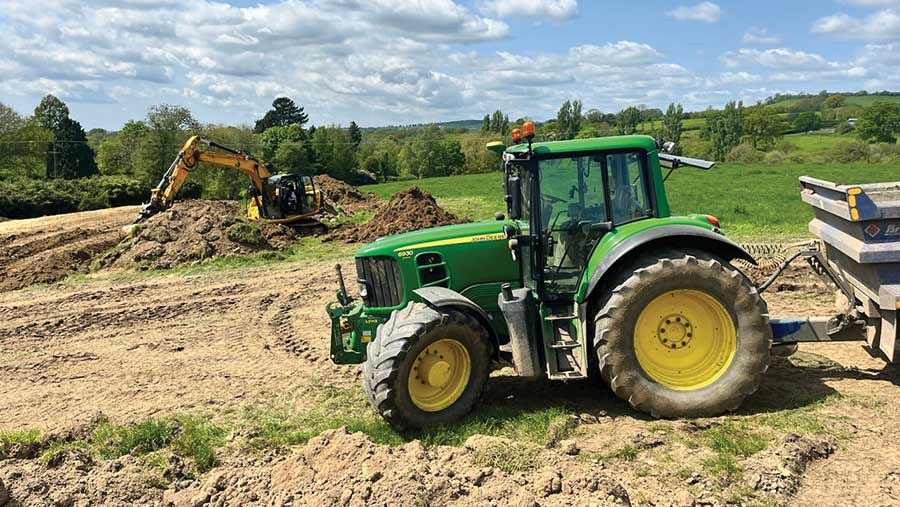
Dowding dump trailer © Nick Fone
Turbo trouble
While it initially proved trouble-free, with about 8,000 hours on the clock the turbo bearings started to fail.
Initially, Jack looked at reconditioned units but, after consulting with the Derv Doctor team, he decided on an alternative option.
The turbochargers fitted on 30-series Deeres are variable-geometry units (VGTs) with the ability to alter vane pitch depending on the boost required.
Due to emissions legislation, their functionality had to be employed to force more exhaust gases back through the EGR valve at various points across the engine’s rev range – in effect throttling performance.
A standard fixed-vane turbo doesn’t suffer this issue, its output corresponding to rpm throughout the range.
“Derv Doctor offered a standard turbo that was £500 less than a remanufactured replacement. Not only that, without an electronic actuator to alter vane pitch – £600-£700 apiece – it was one less thing to go wrong.
“Again, I hadn’t appreciated the effect it would have. All the engine power is there from the moment you touch the throttle.”
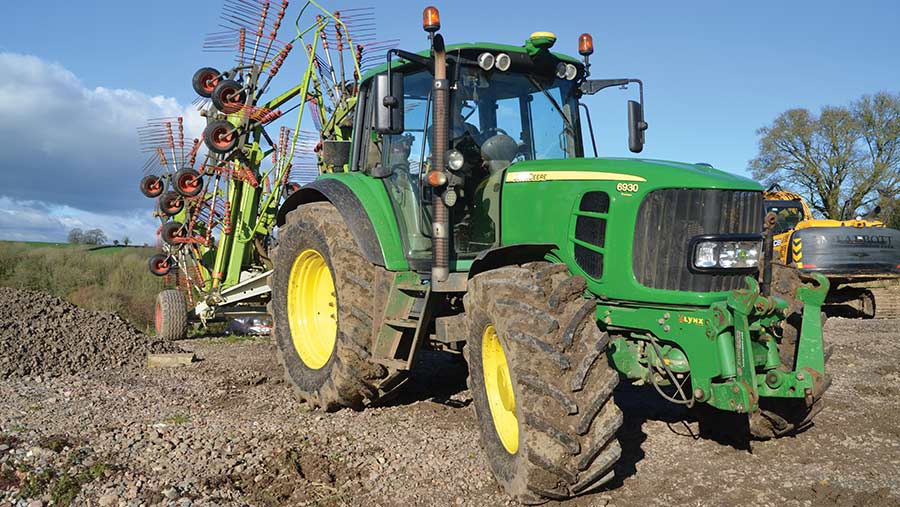
JD 6930 © Nick Fone
7530 joins the club
As the fledgling contracting firm’s workload grew, there was a need for another similarly capable prime-mover, so Jack tracked down a second 7530. Upon arriving in the yard it too received the Derv Doctor treatment – a fixed-vane turbo and engine remap.
“Every time we have the job done the difference is crazy – when we’re hauling silage alongside other contractors, the 7530 will shame the machines it’s working alongside.
“It’s not unusual to find yourself overtaking 280hp tractors on hills.”
While the first 7530 proved dependable from the day it had its turbo transplant, when it reached the 12,000-hour mark, Jack felt it would be sensible to swap the fleet’s front-line machine for something with a bit less work under its belt and a bit more driver comfort.
A 17-plate 6195R was duly tracked down with 6,500 hours on the dash.
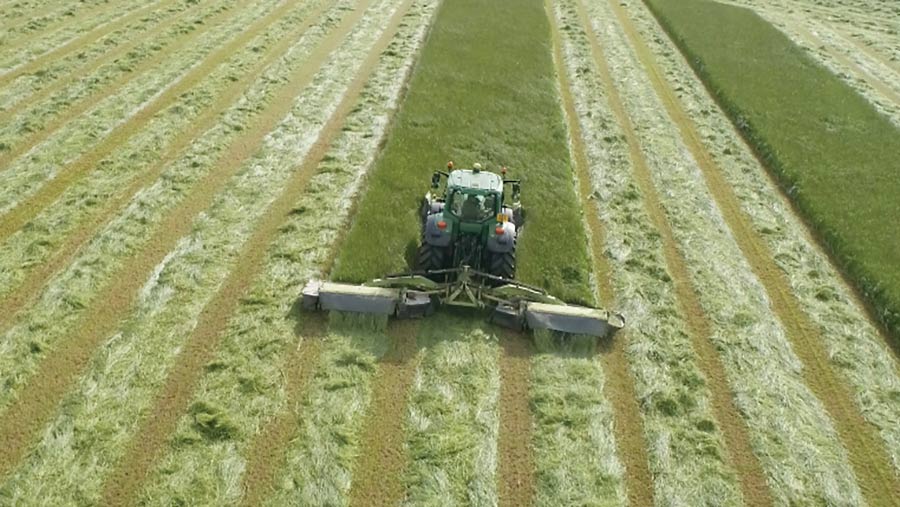
Dowding triples © Nick Fone
Although it had previously had an engine remap with its prior owners, it was using up to 5 litres/ha more diesel than the 7530 when coupled to the triple mowers, so Jack had the previous remap software replaced.
“The fuel use instantly dropped by 3.7 litres/ha. Admittedly, it’s still slightly more than the 7530, but that could be down to the fact it’s running with a stepless AutoPowr CVT rather than a straight mechanical AutoQuad box.
“I can live with that, but what I struggle with is all the trivial things that go wrong that are so expensive to fix, generally all to do with emissions – either AdBlue or EGR.
“Despite being more comfortable than the 30-series, the 6195R is so much more expensive to run, fix and replace that I’m afraid its days are probably numbered with us. I’m sceptical whether the electronics will age well.”
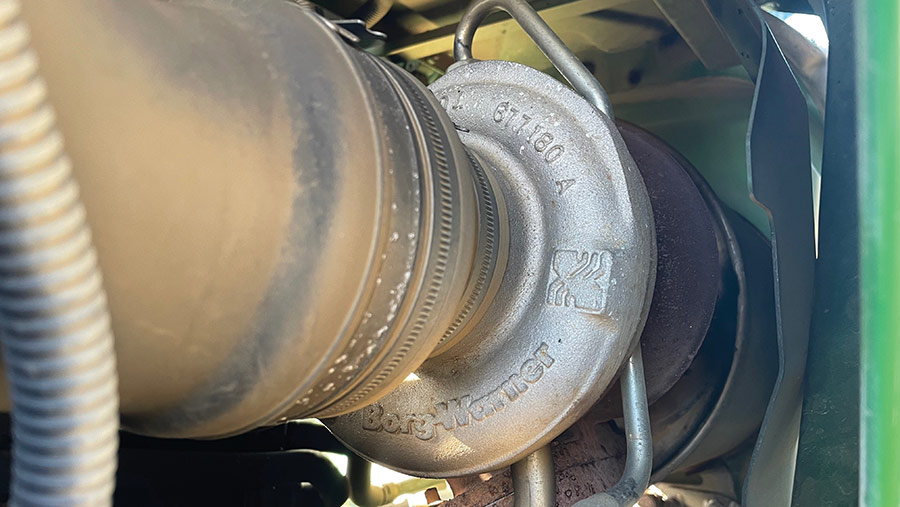
© Nick Fone
What’s next?
Jack’s experiences with John Deere tractors have led him to the conclusion that when running them on beyond 10,000 hours, the 20-year-old design of the 30-series is a better bet than more modern R-series models.
For starters, there’s less capital tied up and the fuel use is lower. Add to that the costs of fixing the innately more complex tech on newer kit and, in his view, it’s a simple decision.
“With the possibility of replacing a linkage rock-shaft, a head gasket and a set of injectors at 6,000-8,000 hours, plus a switch to a fixed-vane turbo and an ECU remap, you won’t find anything much more reliable and cheaper to run than a 30-series.
“With a GPS dome on the roof, there’s no job they can’t do.
“And they hardly lose a penny in depreciation. But that makes finding decent ones on low hours for sensible money hard.
“I think the reality is that we may have to look at other colour tractors of a similar era for serious replacements.”
Fuel figures vs costs
Typically, all the tractors in the Dowding fleet will use similar amounts of diesel when doing similar work.
Before the turbo transplant and tune-up, the 6930, 7530 and 6195R would each consume an average of 46 litres/hour when hauling heavy loads of grain all day long.
After the Derv Doctor treatment, that figure drops to 42 litres/hour.
It’s the same story carting silage – hourly averages are less than 19 litres/hour. Previously, those figures stood in the mid-20s.
When it comes to the expense, each engine remap comes in at about £600, while the switch to an old-school fixed-vane turbo costs £2,150.
EGR and AdBlue deletes range from £600 to £850 (often including a remap), but there is a grey area around their legality.

